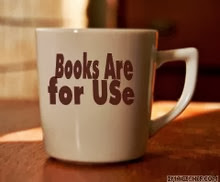The 2013 Australian School Library Survey has revealed a positive relationship between a school’s literacy results and the library’s resourcing levels. Release from Softlink Australia
Extract:
The survey found schools with high national average NAPLAN reading literacy scores reported higher levels of library funding and staffing, while schools with lower scores had lower levels. These results echoed previous surveys.
A summary of other key survey findings included:
•81 percent of all school library budgets either remained unchanged or declined in 2013
•A higher percentage of Government school libraries experienced budget decreases than Catholic
or Independent school libraries
•28 percent of schools reported a decrease in library staffing in 2013 with 63 percent of all schools surveyed stating that there had been no change
•More than a quarter of respondent schools have purchased eBooks in the past year (28 percent) and 55 percent of respondents indicated they will “definitely” or “most probably” purchase eBooks within the next 12 months
•44 percent of teacher librarians said half or more of their student population owned a personal mobile device (iPod, iPad, smart phone or other tablet) Continue reading
On the same shelf:
 Lionel Roy McColvin (it was based on based on demand and value) (1925)
Lionel Roy McColvin (it was based on based on demand and value) (1925) Shiyali Ramamrita Ranganathan (1966)
Shiyali Ramamrita Ranganathan (1966)  S.R. Ranganathan and M.A. Gopinath (2006)
S.R. Ranganathan and M.A. Gopinath (2006) David Spiller (1991)
David Spiller (1991)



